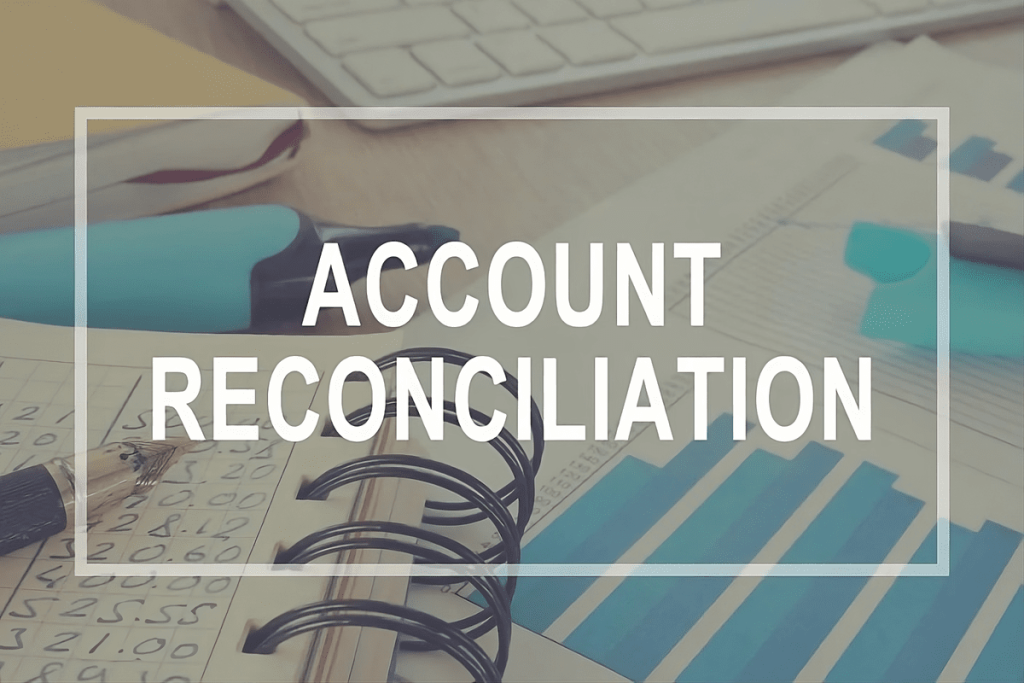Accounting reconciliation is the process of ensuring the accuracy of financial records by comparing two sets of data. This process is crucial for detecting errors, preventing fraud, and complying with regulations. In this guide, we cover the types of reconciliations, their processes, and best practices for businesses of all sizes.
Types of Accounting Reconciliation
Businesses generally perform two types of reconciliation: Balance Sheet Reconciliation and General Ledger Reconciliation. Each serves a specific role in maintaining accurate financial data.
Balance Sheet Reconciliation
Balance Sheet Reconciliation compares internal balances with external records, such as bank statements or loan documents. It ensures that amounts reported in accounts like cash, liabilities, and equity match external documentation.
Key data highlights:
- 95% of large corporations reconcile their balance sheets monthly.
- $2.1 trillion in unreconciled transactions were reported globally in 2022 due to poor reconciliation practices.
| Account Type | Internal Balance | External Balance | Discrepancy |
|---|---|---|---|
| Cash | $150,000 | $150,500 | $500 |
| Loans | $200,000 | $200,000 | $0 |
| Shareholder Equity | $1,000,000 | $1,000,000 | $0 |
General Ledger Reconciliation
General Ledger Reconciliation verifies the accuracy of all entries in the general ledger. This ensures that financial statements are accurate, and it helps catch errors or duplicates in journal entries.
For example:
- 30% fewer fraudulent transactions are found in companies that reconcile general ledgers monthly.

Steps in the Reconciliation Process
There are four essential steps for effective reconciliation:
- Collect Financial Records: Gather internal records, such as general ledger entries, and external documents like bank statements.
- Compare Balances: Identify differences between internal and external records.
- Investigate Discrepancies: Determine the cause of discrepancies, such as outstanding checks or data entry errors.
- Adjust Records: Correct mistakes in internal records or notify external parties of errors.
For example, when reconciling a company’s cash account:
| Date | Internal Record | External Record | Difference |
|---|---|---|---|
| Jan 5, 2024 | $10,000 | $9,500 | $500 |
| Jan 10, 2024 | $5,000 | $5,000 | $0 |
| Jan 15, 2024 | $7,500 | $7,800 | -$300 |
Example: Chargeback Reconciliation
Chargeback reconciliation is essential for businesses processing high volumes of payments. Discrepancies caused by chargebacks, where a transaction is disputed, can disrupt financial records. Merchanto.org, a certified partner of VISA and MasterCard, offers services that help merchants prevent chargeback disputes, which reduces reconciliation issues in high-transaction environments. You can find out more about their services at Merchanto.
Best Practices for Effective Reconciliation
1. Regular Reconciliation
Frequent reconciliation helps businesses detect and correct errors early. Monthly reconciliations are recommended to ensure accurate financial data.
2. Use of Automation
Automating the reconciliation process minimizes manual errors and improves accuracy. 92% of businesses using automation report faster detection of discrepancies. Tools from payment processors such as Stripe and Checkout.com help streamline reconciliation.
3. Documentation
Proper documentation ensures that the reconciliation process is transparent and helps prevent future errors. Documenting reconciliations also simplifies audits.
4. Segregation of Duties
Segregating responsibilities ensures that errors or fraud are more likely to be caught. For example, the person responsible for recording transactions should not be the one reconciling the account.

Challenges in Reconciliation and Solutions
Handling High Transaction Volumes
Businesses with thousands of daily transactions, such as e-commerce companies, face challenges in reconciling high volumes of transactions. Automated tools like those provided by Braintree and Stripe reduce the burden of reconciling these large numbers of transactions.
| Transaction Type | Number Processed (Monthly) | Discrepancy Rate (%) |
|---|---|---|
| Bank Deposits | 5,000 | 1.5% |
| Online Transactions | 100,000 | 0.5% |
| Credit Card Payments | 50,000 | 0.3% |
Managing Discrepancies
Discrepancies in reconciliation often arise due to timing differences or errors in recording transactions. Businesses should promptly investigate discrepancies and adjust their records as needed. Unrecorded sales or deposits in transit are common causes of discrepancies.
| Discrepancy Type | Frequency (%) |
|---|---|
| Timing Differences | 45% |
| Data Entry Errors | 30% |
| Unrecorded Transactions | 15% |
| Fraudulent Activities | 10% |
Reconciliation’s Role in Decision-Making
Accurate reconciliations provide the data businesses need for sound decision-making. Timely reconciliations allow companies to identify cash flow issues early, make informed budgeting decisions, and forecast future financial needs. Companies that regularly reconcile accounts are 40% more likely to avoid cash flow problems.
Compliance and Risk Management
Reconciliation also plays a crucial role in regulatory compliance. Public companies are required to produce accurate financial statements in accordance with SEC regulations. Accurate reconciliations ensure that these statements are free from material misstatements.
| Compliance Requirements | Importance (%) |
|---|---|
| Auditing Standards | 50% |
| Fraud Detection | 30% |
| Risk Management | 20% |
Conclusion
Accounting reconciliation ensures financial accuracy and transparency. Regular reconciliations help businesses detect errors, prevent fraud, and meet regulatory requirements. Implementing best practices, such as automation, segregation of duties, and documenting processes, enhances efficiency and reduces discrepancies.
By applying these practices, businesses can safeguard their financial health and make better financial decisions based on accurate data.



